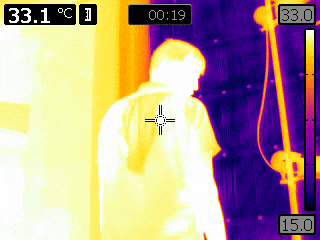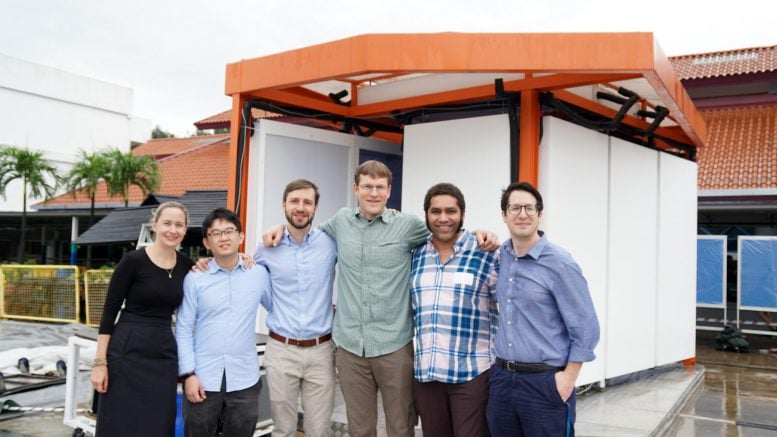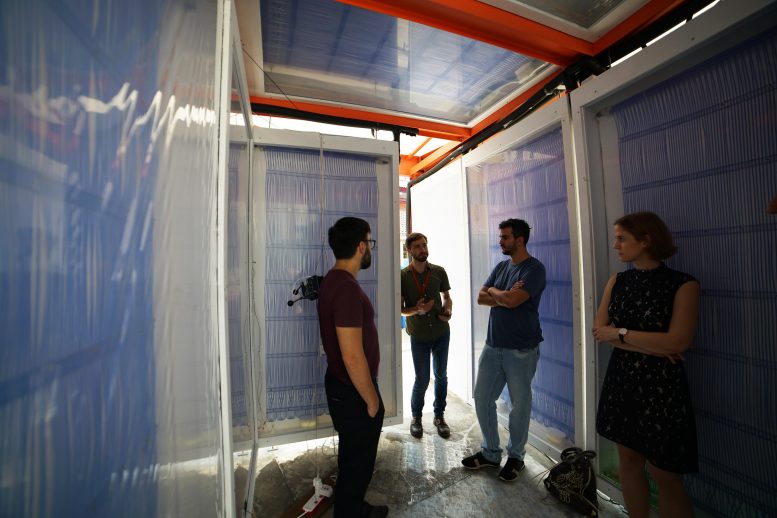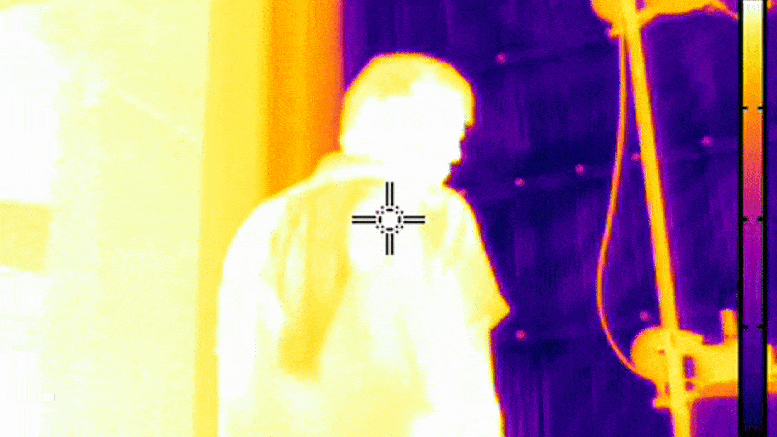Exterior view of the cold tube demonstration pavilion. Photo credit: Lea Ruefenacht
Cooled panels use less energy than traditional air conditioners and work outdoors.
Many people beat the summer heat by turning on the air conditioning. However, air conditioning systems use electricity and spit out millions of tons of carbon dioxide every day. They’re also not always good for your health – constant exposure to central air conditioning can increase the risk of germs recirculating and causing breathing problems.
There’s a better alternative, says a team of researchers from the University of British Columbia. Princeton University, the University of California, Berkeley and the Singapore-ETH Center.

They call it cold tube and have shown that it works.
“Air conditioners cool and dehumidify the air around us – an expensive and not particularly environmentally friendly affair,” explains project leader Adam Rysanek, assistant professor of environmental systems at the UBC School of Architecture and Landscape Architecture, which focuses on future energy systems and green buildings. “The cold tube absorbs the heat that is given off directly by a person’s radiation without having to cool the air flowing over the skin. This results in considerable energy savings. ”
The cold tube is a system of rectangular wall or ceiling panels that are kept cold by the cooling water circulating in them. Since heat naturally moves from a hotter surface to a colder surface through radiation, when a person stands next to or under the plate, their body heat radiates towards the colder plate. This creates a feeling of cooling like cold air flowing over the body even when the air temperature is quite high.

Cold Tube project team from left: Lea Ruefenacht, Kian Wee Chen, Eric Teitelbaum, Forrest Meggers, Kipp Bradford and Adam Rysanek. Photo credit: Nicholas Houchois
Although these types of cooling panels have been used in the construction industry for several decades, what is special about the cold tube is that it does not have to be combined with a dehumidification system. Just as a cold glass of lemonade would condense water on a hot summer day, so cooling walls and ceilings in buildings would condense water without first drying out the air around the panels. The researchers behind the cold tube developed an airtight, moisture-repellent membrane that envelops the cooled plates in order to prevent the formation of condensation and at the same time let the radiation through.
Cool down outdoors
The team built an outdoor demonstration unit in Singapore last year, where 55 members of the public were invited to visit and provide feedback. While the system was running, most of the participants stated that they felt “cool” or “comfortable” despite an average air temperature of 30 degrees Celsius (86 degrees Fahrenheit). Thanks to the special membrane, the panels also stayed dry.
“Because the Cold Tube allows people to feel cool without dehumidifying the air around them, we can try to save up to 50 percent of the typical energy consumption of air conditioning systems in suitable rooms,” said Eric Teitelbaum, senior engineer at AIL Research who supervised the work on the demonstration project while working at the Singapore-ETH Center.

In the cold pipe, thermally transparent membranes separate the air cooling from the radiation cooling and thus maintain comfort without cooling the air or forming condensation. Photo credit: Lea Ruefenacht
“This design is ready. It can obviously be used in many outdoor areas – think open air summer fairs, concerts, bus stops, and public markets. The mission, however, is to adapt the design for interiors where central air conditioning is normally used, ”he added.
In addition to energy savings, technologies like the cold tube have a great future, says Forrest Meggers, co-leader of the project, assistant professor at the Princeton School of Architecture and the Andlinger Center for Energy and the Environment.
“Since the cold tube works independently of the room air temperature and humidity, it is possible to keep the windows open in our hotter and hotter summers and still feel good,” said Meggers. “The cold tube can provide relief in a variety of regions, from North American homes and offices currently based on standard HVAC systems to developing countries with significant cooling needs in the next half century.”
Keep indoor air healthy during the pandemic
There is another aspect of the cold tube that is particularly relevant in 2020, says Adam Rysanek.
“The COVID-19 The pandemic has made the public aware of how sensitive our health is to the quality of the air we breathe indoors. In particular, we know that some of the safest spaces in this “new normal” are outdoors, ”said Rysanek. “With climate change and air conditioning a global necessity rather than a luxury, we need to be prepared for alternatives that are not only better for the environment but also for our health. The idea of staying cool with the windows open is much more valuable today than it was six months ago. ”
The team is currently using the data collected in Singapore to update its predictions on the effectiveness of the indoor cold tube around the world. They plan to demonstrate a commercially viable version of the technology by 2022.
The Cold Tube is described in an article published on August 18, 2020 in PNAS. It was developed with financial support from the Singapore National Research Foundation’s IntraCREATE SEED Grant program. The project was led by Adam Rysanek (UBC), Forrest Meggers (Princeton University) and Jovan Pantelic (UC Berkeley) and administered by the Singapore-ETH Center.
For more information on the Cold Tube, see Mitigating COVID-19 and Climate Change with Innovative Alternative Cooling Strategies.
Reference: “Membrane-assisted radiation cooling for global expansion of thermal comfort zones without air conditioning” by Eric Teitelbaum, Kian Wee Chen, Dorit Aviv, Kipp Bradford, Lea Ruefenacht, Denon Sheppard, Megan Teitelbaum, Forrest Meggers, Jovan Pantelic and Adam Rysanek, August 18, 2020 , Procedure of the National Academy of Sciences.
DOI: 10.1073 / pnas.2001678117



